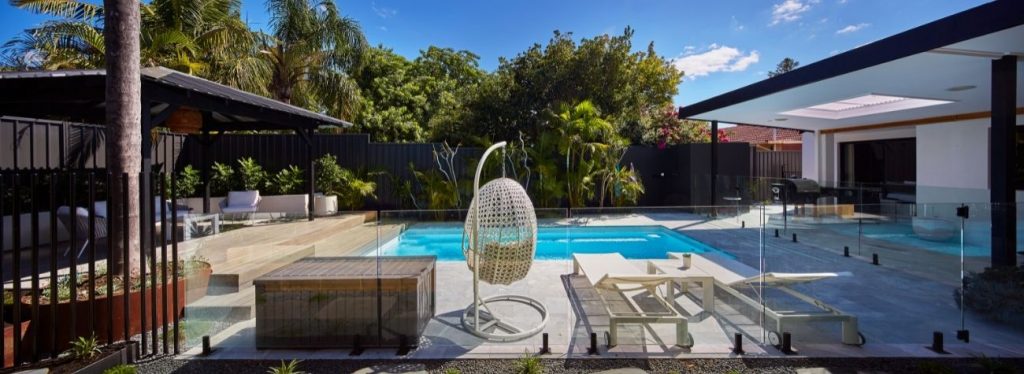Good Planning When Considering A Pool Is The Key

What To Consider When Planning An Inground Pool
Location Of The Pool:
Most families usually decide to have their swimming pool in their backyards, but some do locate them in the front, often depends on what space is available.
Points To Consider When Planning A Pool:
The positioning of the pool: Try and avoid windy spots if possible. Keep the pool away from nearby buildings and trees as these can block the sunlight thus preventing the pool from warming up during the day. A pool with little or no natural sunlight will be up to 4c cooler.
Variable Sites:
Nowadays a pool can be installed on just about any location you can imagine.
On extreme slopes, for example, concrete piers or retaining walls can be installed to support the pool. Even close to boundaries, we have companies that can inject grout directly into the soil to form a barrier to stop any movement or subsiding.
If you have an unusual site, don`t be deterred. Talk to us, ask to be shown pools in a similar situation to yours. You`ll find we have done it all before and can offer a solution to any site queries.
Swimming Pool Size
In the past, there was a limited amount of pools on the market. Today, however, the choice is massive and more and more pool owners are installing pools to suit their needs rather than following a trend.
Pool companies have recognised the new trends and now provide pools to suit the customer’s needs. With blocks becoming smaller the range of smaller pools and plunge pools is massive with all shapes and sizes to satisfy any backyard and family requirements.

How Deep Should A Pool Be?
If you are looking at a Lap Pool for swimming and exercising, then maybe about 1.2m of water under you, so that you don`t touch the bottom when making your turns. In a typical family pool, 1.0-1.1m is suitable for the shallow end, and the deep end, between 1.7 and 1.8m is entirely satisfactory. Though there is a growing trend for pools to be no deeper than 1.5m.
Landscaping Around The Pool:
Designing the garden around your pool is rightly the most important part of the job. The layout will enhance the appearance of the pool and your surrounding area. What type of plants you use, and where you locate them is vitally important for the well being of the pool and the people who use it. You don’t want leaves constantly dropping in the pool and roots blocking up the system; all this needs to be considered. A carefully planned garden will mean less time spent on pool maintenance and more time enjoying your pool.
Considerations For Location The Pool
Sun: Will the sun cover the pool at the right time of the day or is it mainly in the shade.
Shade: Is there natural shade from the sun or do you need to consider building a shaded area, e.g. Gazebo, Shade Cloth.
Wind: Is the area, where the pool is going protected from the wind? Would you need to build some kind off windbreak? If you can`t avoid installing your pool in a windy spot, maybe a garden hedge will do or a fence. Perhaps you could fit a solid fence like a Colourbond Fence this may block the worst of the wind.
Vegetation: How close are trees and shrubs to the pool area. Trees shedding leaves can be high maintenance and turn your pool green.
Supervision: Always consider the location of the pool. Can you see the pool from a living area? Ideally the Kitchen or Lounge (very important if you have kids)
Soil Types
In Perth Western Australia, around 80 per cent of swimming pools are installed in sandy soils. Between 5 and 10 per cent involve the removal of limestone during excavation, with the balance being clay, gravel or rocky sites. Make sure you get a fair quote for hidden extras, e.g. cartage to remove excess soil.

